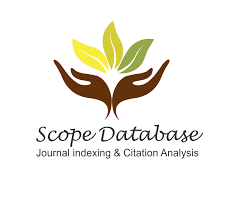Details
Deep Learning and Machine Learning to Diagnose Melanoma
Dr Priyanka Kaushik
Professor, Computer Science Engineering Dept, AIT CSE (AIML) Chandigarh University Punjab
Download PDF http://doi.org/10.37648/ijrst.v13i01.008
http://doi.org/10.37648/ijrst.v13i01.008
Abstract
The most dangerous disorders include melanoma. Yet, a precise diagnosis of skin cancer is difficult. Recent research has shown that a variety of activities can be performed better using deep learning and machine learning techniques. For skin conditions, these algorithms are highly useful. In this article, we examine various deep learning and machine learning techniques and how they could be applied to the detection of melanoma. This paper provides a number of publicly downloadable datasets, information on common melanoma, instructions for getting dermatology pictures, and more. Once machine learning and deep learning concepts have been introduced, our attention shifts to analysing common machine learning and deep learning architectures as well as popular frameworks for putting machine and deep learning algorithms into practice. Metrics for performance evaluation are then offered. In this section, we will cover the research on machine learning and deep learning and how they can be applied to the detection of melanoma skin illnesses. We also go over potential research avenues and the difficulties in the field. The main objective of this work is to discuss modern machine learning and deep learning techniques for melanoma diagnosis.
Keywords: SVM; CNN; ResBCU-Net; CAD; Neural Network.
References
- Angela Jiang, Itisha S. Jefferson, S. Kayo Robinson, Dana Griffin, William Adams, Jodi Speiser, Laura Winterfield, Anthony Peterson, Eleanor Tung-Hahn, Kristin Lee, David Surprenant, Anne Coakley, Rebecca Tung, Murad Alam, (2021); Skin cancer discovery during total body skin examinations, International Journal of Women's Dermatology, Volume 7, Issue 4, Pages 411-414,ISSN 2352-6475
- ACS . Cancer Facts & Figures 2018. In: Cancer Facts Fig. Atlanta, GA, U.S.: American Cancer Society (ACS) (2018). p. 1–71. [Google Scholar]
- Rogers HW, Weinstock MA, Feldman SR, Coldiron BM. (2012); Incidence Estimate of Nonmelanoma Skin Cancer (Keratinocyte Carcinomas) in the US Population, 2012. JAMA Dermatol (2015) 151: 1081–6. Doi: 10.1001/jamadermatol.2015.1187 [PubMed] [CrossRef] [Google Scholar]
- Massone C, Di Stefani A, Soyer HP.(2005); Dermoscopy for Skin Cancer Detection. Curr Opin Oncol; 17:147–53. Doi: 10.1097/01.cco.0000152627.36243.26 [PubMed] [CrossRef] [Google Scholar]
- Hoang L, Lee SH, Lee EJ, Kwon KR. (2022); Multiclass Skin Lesion Classification Using a Novel Lightweight Deep Learning Framework for Smart Healthcare. Appl Sci; 12:2677. Doi: 10.3390/app12052677 [CrossRef] [Google Scholar]
- Rasmiranjan Mohakud, Rajashree Dash, (2021); Designing a grey wolf optimization based hyper-parameter optimized convolutional neural network classifier for skin cancer detection, Journal of King Saud University - Computer and Information Sciences; ISSN 1319-1578
- Thanh-Ngan Luu, Quoc-Hung Phan, Thanh-Hai Le, Thi-Thu-Hien Pham, (2022); Classification of human skin cancer using Stokes-Mueller decomposition method and artificial intelligence models, Optik, Volume 249,168239,ISSN 0030-4026
- Simon M. Thomas, James G. Lefevre, Glenn Baxter, Nicholas A. Hamilton, (2021); Non-melanoma skin cancer segmentation for histopathology dataset, Data in Brief, Volume 39,107587,ISSN 2352-3409
- M. Krishna Monika, N. Arun Vignesh, Ch. Usha Kumari, M.N.V.S.S. Kumar, E. Laxmi Lydia, (2020); Skin cancer detection and classification using machine learning, Materials Today: Proceedings, Volume 33, Part 7,Pages 4266-4270,ISSN 2214-7853
- S. Naresh Kumar, B. Mohammed Ismail, (2020); Systematic investigation on Multi-Class skin cancer categorization using machine learning approach, Materials Today: Proceedings, ISSN 2214-7853
- Daniella Castro Araújo, Adriano Alonso Veloso, Renato Santos de Oliveira Filho, Marie-Noelle Giraud, Leandro José Raniero, Lydia Masako Ferreira, Renata Andrade Bitar, (2021); Finding reduced Raman spectroscopy fingerprint of skin samples for melanoma diagnosis through machine learning, Artificial Intelligence in Medicine, Volume 120,102161,ISSN 0933-3657
- Ravisankar Malladi, Prashanthi Vempaty, Goutham Raju k, Vyshnavi Pogaku, (2021); Advanced machine learning based approach for prediction of skin cancer, Materials Today: Proceedings, ISSN 2214-7853
- Moloud Abdar, Maryam Samami, Sajjad Dehghani Mahmoodabad, Thang Doan, Bogdan Mazoure, Reza Hashemifesharaki, Li Liu, Abbas Khosravi, U. Rajendra Acharya, Vladimir Makarenkov, Saeid Nahavandi, (2021); Uncertainty quantification in skin cancer classification using three-way decision-based Bayesian deep learning, Computers in Biology and Medicine, Volume 135,04418,ISSN 0010-4825
- Rathore, R. (2022). A Review on Study of application of queueing models in Hospital sector. International Journal for Global Academic & Scientific Research, 1(2), 1–6. https://doi.org/10.55938/ijgasr.v1i2.11
- Kaushik, P. (2022). Role and Application of Artificial Intelligence in Business Analytics: A Critical Evaluation. International Journal for Global Academic & Scientific Research, 1(3), 01–11. https://doi.org/10.55938/ijgasr.v1i3.15
- Rathore, R. (2022). A Study on Application of Stochastic Queuing Models for Control of Congestion and Crowding. International Journal for Global Academic & Scientific Research, 1(1), 1–6. https://doi.org/10.55938/ijgasr.v1i1.6
- Sharma, V. (2022). A Study on Data Scaling Methods for Machine Learning. International Journal for Global Academic & Scientific Research, 1(1), 23–33. https://doi.org/10.55938/ijgasr.v1i1.4











